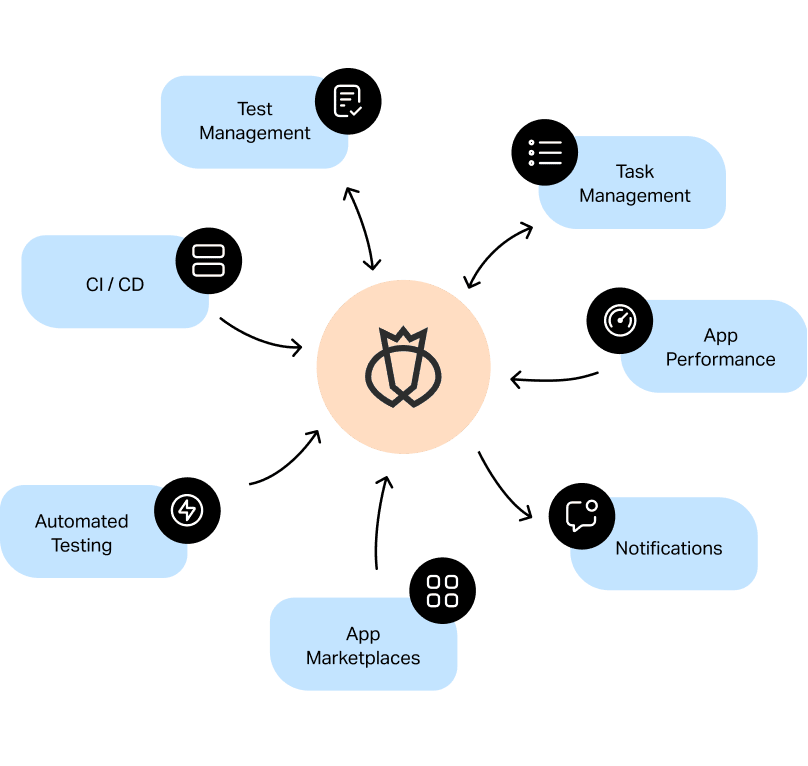From Guidebook to Automated Screening: A Comprehensive Guide to Transitioning Smoothly and Properly
In the realm of software program testing, the shift from guidebook to automated procedures has actually come to be a progressively vital shift for organizations looking for to boost performance and accuracy in their testing techniques. As modern technology remains to advance, the requirement for seamless and reliable automatic testing techniques has actually never been extra important. The trip from guidebook to automated testing is not without its difficulties, yet when approached purposefully and with a clear plan in mind, the benefits can be substantial - automation testing. In this extensive overview, we will certainly check out crucial actions and factors to consider essential for a successful shift, from the preliminary selection of tools to the combination of automation right into existing process. Remain tuned to uncover the understandings that will help lead the way for a smoother and more efficient screening procedure.
Advantages of Automated Checking
Automated testing supplies countless benefits, improving efficiency and accuracy in software program advancement processes. One main benefit is the significant reduction in screening time. Automated tests can be run all at once on multiple tools and operating systems, significantly accelerating the testing phase compared to manual screening. This boosted efficiency permits faster responses on the high quality of the software, making it possible for developers to determine and deal with concerns promptly.
Furthermore, automated screening ensures a greater level of accuracy in spotting flaws. Considering that automated examinations comply with predefined manuscripts, human mistake is minimized, bring about more trustworthy test outcomes. Uniformity in screening is also improved, as automated tests implement the exact same actions precisely each time they are run. This consistency is vital in making sure that all performances of the software are completely checked, decreasing the likelihood of unnoticed bugs sliding via to production.
Picking the Right Tools

Firstly, evaluate your demands and goals. Comprehend the extent of your task, the innovations involved, and the capability of your team. This analysis will help you identify the capabilities and attributes you require in your screening devices.
Secondly, think about the compatibility of the tools with your existing systems and processes. Smooth combination with your existing software advancement lifecycle is necessary to guarantee a smooth change to automation.
Additionally, review the scalability and adaptability of the tools. As your screening needs progress, the tools need to be able to adapt and fit modifications successfully.
Lastly, variable in the support and area around the tools. Durable support and an energetic individual neighborhood can provide beneficial resources and support when implementing automated screening. By thoroughly thinking about these facets, you can select the right devices that align with your demands and set the stage for an effective transition to automated screening.
Composing Effective Examination Manuscripts

When crafting test manuscripts, it is crucial to think about the certain requirements of the software being examined and ensure that the scripts address all critical performances. Clear and descriptive calling conventions for examination scripts and examination instances can enhance readability and maintainability. Furthermore, including error handling systems within the examination manuscripts can help in determining and resolving issues immediately.
In addition, organizing test manuscripts right into modular parts can improve reusability and scalability, minimizing redundancy and boosting efficiency in test script maintenance. Normal evaluations and updates to examine scripts are essential to maintain speed with advancing software requirements and performances. By complying with these principles, testers can produce reliable and durable examination manuscripts that add significantly to the success of automated testing processes.
Integrating Automation Into Workflows
Efficient integration of automation tools into existing workflows enhances and streamlines processes efficiency within software growth cycles. When incorporating automation right into operations, it website here is critical to recognize repeated tasks that can be automated to save time and lower human mistake. By seamlessly incorporating automated screening devices like Selenium or Appium right into the software growth lifecycle, groups can accomplish faster responses on code modifications, causing quicker insect detection and resolution. This assimilation enables continuous screening throughout the growth process, guaranteeing that any concerns are determined at an early stage, resulting in greater software application high quality. Additionally, automation can be made use of to activate tests instantly after each code dedicate, offering prompt recognition and maximizing testers to concentrate on more facility situations. Proper assimilation of automation tools calls for partnership between growth, testing, and procedures teams to develop a unified process that maximizes effectiveness and performance in providing top quality software.
Ensuring a Smooth Shift
Efficiently transitioning to automated testing entails meticulous preparation and mindful execution to optimize and decrease disturbances performance in the software application development procedure - automation testing. To make certain a smooth change, it is important to begin by carrying out a comprehensive analysis of the current testing procedures and identifying locations where automation can bring one of the most substantial advantages. Involving with all stakeholders beforehand at the same time, including designers, testers, and task supervisors, is important for gathering assistance and buy-in for the automation initiative
Interaction is key throughout this change phase. Clear interaction of the objectives, advantages, and expectations of automated testing aids to take care of any type of resistance or worries that may arise. Additionally, giving ample training and resources for staff member to upskill in automation devices and methods is important for ensuring an effective shift.

Verdict
Finally, transitioning from guidebook to automated screening supplies numerous advantages, consisting of increased efficiency and reliability. By selecting the appropriate devices, creating reliable examination you could try this out manuscripts, and incorporating automation effortlessly right into process, organizations can guarantee a successful and smooth transition. It learn this here now is important to embrace automation as a valuable property in software program screening processes to improve overall top quality and performance.
In the world of software application testing, the change from guidebook to automated processes has come to be a significantly crucial shift for organizations looking for to improve effectiveness and accuracy in their screening methods. Automated tests can be run simultaneously on numerous gadgets and operating systems, substantially speeding up the screening phase contrasted to hands-on testing. Uniformity in testing is additionally enhanced, as automated tests carry out the same actions exactly each time they are run.To ensure the effective implementation of picked testing devices, the development of effective examination scripts plays an essential function in confirming the performance and performance of automated processes - automation testing. By adhering to these principles, testers can develop efficient and durable test manuscripts that contribute substantially to the success of automated screening processes